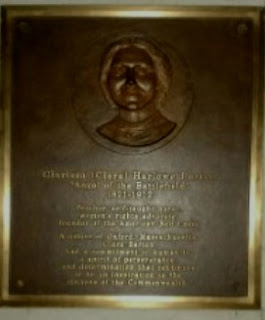Historical Profile: Jerome H. Holland

On May 21, 1881, Clara Barton, assisted by a group of friends, founded the American Association of the Red Cross in Washington, D.C.
African Americans have contributed to the success of the organization since its inception in the late 19th century. Abolitionist Frederick Douglass was a member of the group of leaders that joined Barton to develop the organization, which today is known as the American Red Cross. In 1917 Frances Elliot Davis was the first African American nurse in the American Red Cross. Dr. Charles R. Drew was the first medical director of the first American Red Cross Blood Bank.
African Americans have contributed to the success of the organization since its inception in the late 19th century. Abolitionist Frederick Douglass was a member of the group of leaders that joined Barton to develop the organization, which today is known as the American Red Cross. In 1917 Frances Elliot Davis was the first African American nurse in the American Red Cross. Dr. Charles R. Drew was the first medical director of the first American Red Cross Blood Bank.
Another African American, Jerome Heartwell Holland, made unique contributions to the American Red Cross. Holland was born in Auburn, New York on January 9, 1916. A standout football player at Cornell University, he was named a two-time All-American for his gridiron talents and he was inducted into the College Football Hall of Fame. Holland earned his bachelor’s and master’s degrees both from Cornell University, in 1939 and 1941, respectively.
In 1950 Holland earned a Ph.D. from the University of Pennsylvania. With a doctorate in his possession, Holland became a college administrator. He eventually served as president of Delaware State College and also Hampton University.
Holland served on the American Red Cross Board of Governors from 1964 to 1970. From 1970 to 1972 Dr. Holland was the U.S. ambassador to Sweden. Also in 1972 Holland won the Theodore Roosevelt Award, the National Collegiate Athletic Association’s highest honor. In 1973 Holland became the first African American to serve on the New York Stock Exchange’s Board of Directors.
In 1979 President Jimmy Carter selected Holland as the Chairman of the American Red Cross. The chairman, a volunteer position, is the highest ranking official in the entire organization, which has 1.2 million trained volunteers. Holland remained chairman until his death on January 13, 1985.
On February 23, 1987, a new American Red Cross facility opened in Rockville, Maryland. The building was named the Jerome H. Holland Laboratory for the Biomedical Sciences. A portrait of Holland is located in the main lobby of the building. The 110,000 square foot building houses the development and research division of the American Red Cross Biomedical Services. One of the main goals of the Holland Laboratory is to improve the safety of blood services in the United States.
The American Red Cross continued to honor the legacy of Holland and other African Americans when the organization joined the National Urban League to create the American Red Cross African American HIV/AIDS Program in 1990. The program was created to educate the African American community about HIV/AIDS prevention.
In 1950 Holland earned a Ph.D. from the University of Pennsylvania. With a doctorate in his possession, Holland became a college administrator. He eventually served as president of Delaware State College and also Hampton University.
Holland served on the American Red Cross Board of Governors from 1964 to 1970. From 1970 to 1972 Dr. Holland was the U.S. ambassador to Sweden. Also in 1972 Holland won the Theodore Roosevelt Award, the National Collegiate Athletic Association’s highest honor. In 1973 Holland became the first African American to serve on the New York Stock Exchange’s Board of Directors.
In 1979 President Jimmy Carter selected Holland as the Chairman of the American Red Cross. The chairman, a volunteer position, is the highest ranking official in the entire organization, which has 1.2 million trained volunteers. Holland remained chairman until his death on January 13, 1985.
On February 23, 1987, a new American Red Cross facility opened in Rockville, Maryland. The building was named the Jerome H. Holland Laboratory for the Biomedical Sciences. A portrait of Holland is located in the main lobby of the building. The 110,000 square foot building houses the development and research division of the American Red Cross Biomedical Services. One of the main goals of the Holland Laboratory is to improve the safety of blood services in the United States.
The American Red Cross continued to honor the legacy of Holland and other African Americans when the organization joined the National Urban League to create the American Red Cross African American HIV/AIDS Program in 1990. The program was created to educate the African American community about HIV/AIDS prevention.


Comments
Post a Comment